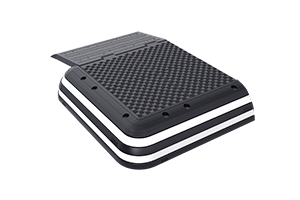| PROJECT NAME: | The Figueroa Corridor Streetscape project (MyFigueroa). |
| TOWN/CITY: | Los Angeles, California |
| LOCATION: | Figueroa Street |
| INSTALLATION DATE: | 2018 |
A movement based on redesigning streets for people has been gaining momentum around the world. American cities like New York, Houston, San Jose and Charlotte have decided to create “complete streets” projects to better balance the needs of pedestrians, cyclists, transit riders and drivers. These projects offer increased safety for all users and they have shown that they create a more vibrant, healthier community.
Need and project objectives.
Before the works, Figueroa Street, located in downtown Los Angeles, was used as a regional freeway alternative. This created excess car traffic, unreliable bus transit due to traffic jams and a lack of accessibility for pedestrians and bike users.
As a response, the city of Los Angeles created the Figueroa Corridor Streetscape project (MyFigueroa) to transform the Figueroa Corridor into a complete, multimodal street meeting the needs of pedestrians, bicyclists, transit riders, and drivers alike.
The project focused on the following areas:
- Adding better signing, high-visibility crosswalks, transit platforms, and public art to make the pedestrian and transit-rider experience safer and more enjoyable.
- A three-mile protected bike lane to link downtown and south Los Angeles.
The proposed solution.

The city of Los Angeles decided that there was a need to integrate the bus stop and the bike lane by creating a raised platform to allow buses to pick up and drop off passengers while allowing the bike riders to cross the bus stop. For this purpose, the city installed a 133’ long and 9’ wide Vectorial® system platform.
In this configuration, the bus stops at an elevated boarding area, while the bike lane runs over the platform. This solution has allowed the two forms of transport to coexist in the same place, improving safety and accessibility for transit riders and safety for cyclists.



